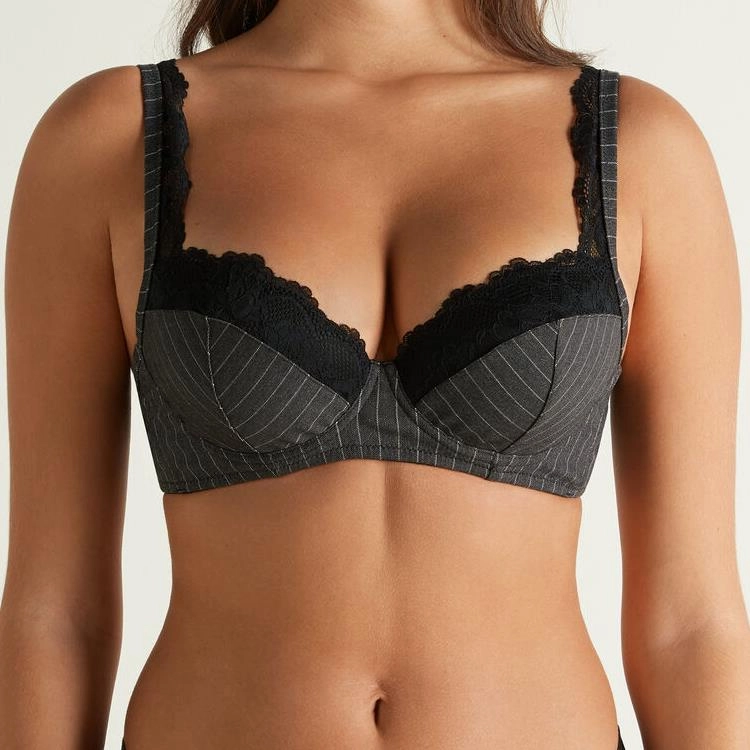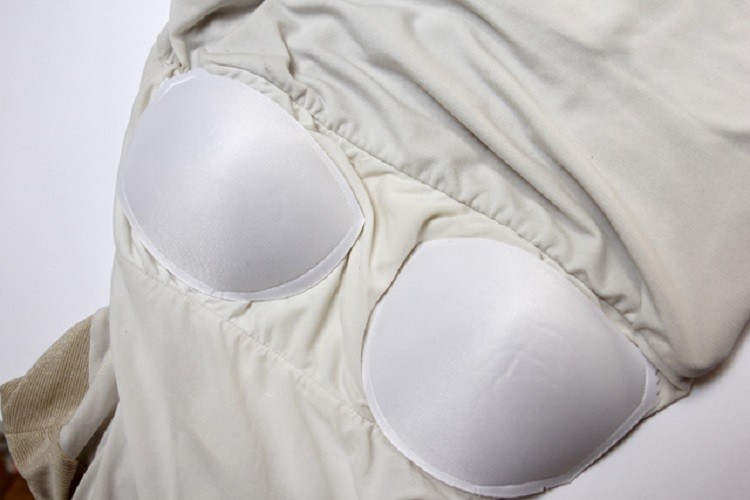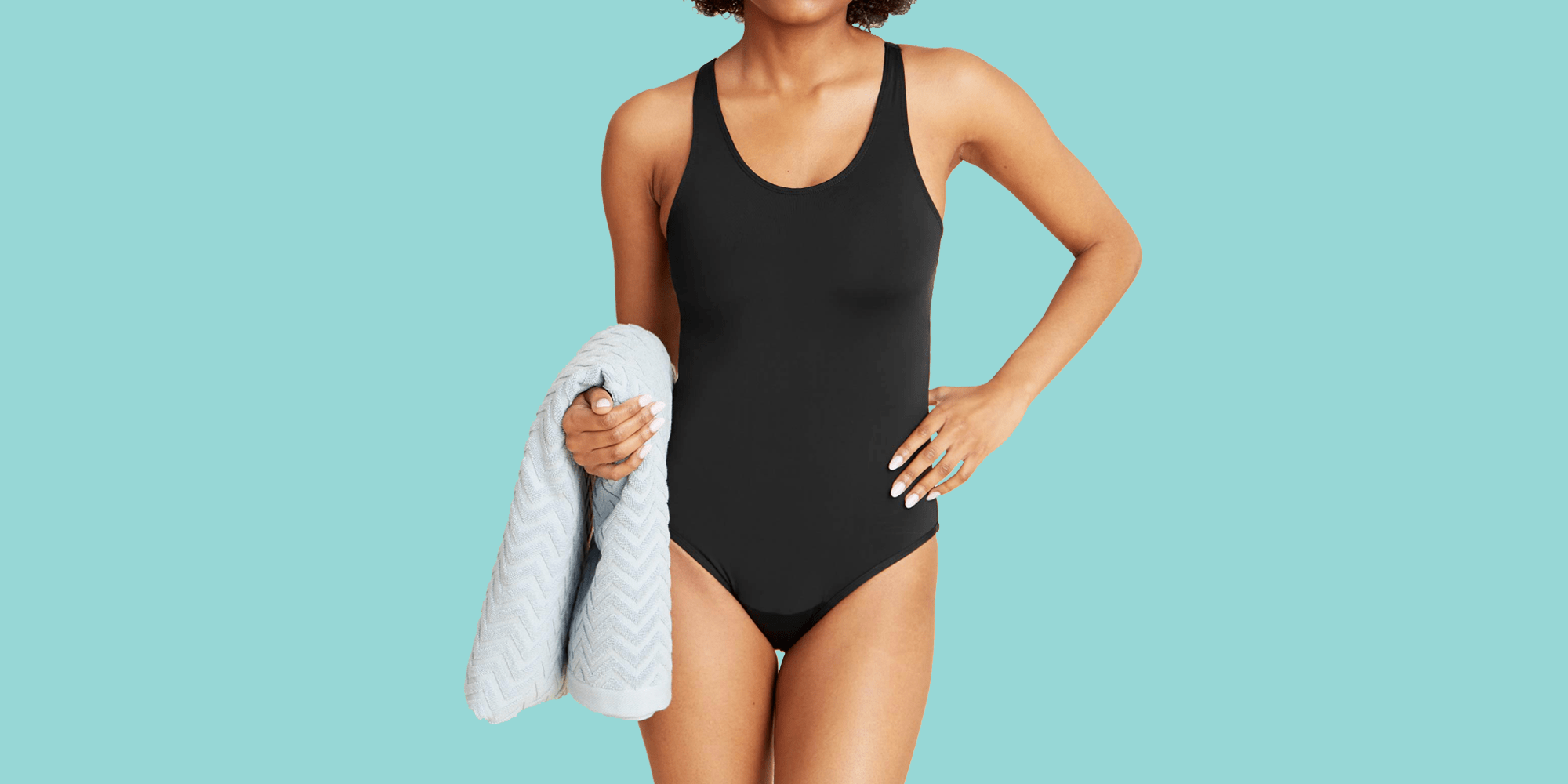Content Menu
● Understanding Swimsuit Pads
● Types of Swimsuit Pads
● Choosing the Right Pads for Your Swimsuit
>> Material Matters
>> Picking the Perfect Shape
>> Thickness and Its Impact
● Step-by-Step Guide: How to Put Pads in a Swimsuit
● Alternative Methods for Swimsuits Without Pad Pockets
● Tips for Success
● Caring for Your Padded Swimsuit
● Troubleshooting Common Issues
● Conclusion
● Frequently Asked Questions (FAQs)
>> Can I Use Regular Bra Pads in My Swimsuit?
>> Will Pads Fall Out When Swimming?
>> How Often Should I Replace My Swimwear Pads?
Discover the secrets to flawlessly inserting pads into your swimsuit for the perfect fit and confidence at the beach.
Swimming is a beloved activity for many, offering a refreshing escape from the heat and a great form of exercise. However, for some individuals, particularly women, the thought of wearing a swimsuit can be accompanied by concerns about comfort, support, and appearance. One solution that has gained popularity is the use of swimsuit pads. These small but mighty additions can make a significant difference in how a swimsuit fits and feels. In this comprehensive guide, we'll explore everything you need to know about putting pads in a swimsuit, from the benefits to the step-by-step process and helpful tips for optimal results.

Understanding Swimsuit Pads
Before we dive into the how-to, it's essential to understand what swimsuit pads are and why they're used. Swimsuit pads, also known as swimsuit inserts or bra cups, are removable or sewn-in pieces of padding designed to enhance the shape, provide support, and add coverage to swimwear. They come in various shapes, sizes, and materials, catering to different needs and preferences.
Benefits of Using Swimsuit Pads:
1. Enhanced Shape: Pads can help create a more flattering silhouette by adding volume and contouring to the bust area.
2. Increased Support: For those with larger busts, pads can offer additional support, reducing discomfort during water activities.
3. Improved Coverage: Pads can prevent show-through, especially in lighter-colored or thinner swimsuits.
4. Customizable Fit: Removable pads allow for adjustability, enabling wearers to customize their look and comfort level.
5. Confidence Boost: Many people feel more self-assured when their swimwear fits well and enhances their natural shape.
Types of Swimsuit Pads
There are several types of swimsuit pads available, each serving different purposes:
1. Foam Pads: Lightweight and quick-drying, foam pads are the most common type. They provide a natural look and feel.
2. Silicone Pads: These offer a more realistic appearance and weight, mimicking natural breast tissue. They're waterproof but can be heavier than foam options.
3. Push-Up Pads: Designed to lift and enhance cleavage, these pads are thicker at the bottom and taper towards the top.
4. Removable Pads: These can be inserted or removed as desired, offering flexibility in fit and appearance.
5. Sewn-In Pads: Permanently attached to the swimsuit, these pads ensure consistent placement but offer less customization.

Choosing the Right Pads for Your Swimsuit
When it comes to adding bathing suit pads to your swimsuit, making the right choice is super important. The pads you pick can change how your swimsuit feels and looks. Here are some tips to help you find the best swimwear inserts for you!
Material Matters
The first thing to think about is the material of the pads. Pads can be made from different materials like foam, gel, or silicone. Each type has its own perks! Foam pads are lightweight and comfy, while gel pads can feel nice and squishy. Silicone pads are thick and give a good shape, but they might be heavier. Think about what feels best for you and what suits your swimsuit style!
Picking the Perfect Shape
Next, let’s talk about the shape of the pads. The shape needs to match the shape of your swimsuit. This way, they can blend in and look natural. Some pads are round, while others are more oval. Make sure you choose a shape that fits your swimsuit’s style, so you feel great while you swim!
Thickness and Its Impact
Lastly, consider the thickness of the pads. Thicker pads can give you more lift, but they might also feel bulky. If you want a more natural look, thinner pads might be the way to go. It's all about what feels comfortable for you. Remember, the right thickness helps you look and feel your best while enjoying the water!
Step-by-Step Guide: How to Put Pads in a Swimsuit
Now that we understand the basics, let's walk through the process of inserting pads into a swimsuit. This guide assumes you're working with a swimsuit that has a pocket or opening for removable pads. If your swimsuit doesn't have this feature, don't worry – we'll cover alternatives later in the article.
Step 1: Prepare Your Workspace
Find a clean, flat surface to work on. This could be a table, countertop, or even a clean floor. Ensure you have good lighting so you can see what you're doing clearly.
Step 2: Turn the Swimsuit Inside Out
Carefully turn your swimsuit inside out. This will give you better access to the pad pockets and make the insertion process easier.
Step 3: Locate the Pad Pockets
Most swimsuits with removable padding have small openings or pockets on the inside of the bust area. These are typically located along the side or bottom seam of the cup. If you're having trouble finding them, gently feel around the edges of the cup area.
Step 4: Choose the Right Pads
Select pads that are appropriate for your swimsuit and personal preferences. Consider the shape of your swimsuit cups, the level of enhancement you desire, and the material that will be most comfortable for you.
Step 5: Orient the Pads Correctly
Before inserting the pads, make sure you have them oriented correctly. Most pads have a curved shape that should follow the natural contour of the bust. The thicker part of the pad usually goes at the bottom of the cup for lift and support.

Step 6: Insert the Pads
Gently push the pad through the opening of the pocket. Use your fingers to guide it into place, ensuring it lies flat and fills the entire cup area. Take your time with this step to avoid wrinkles or bunching.
Step 7: Adjust for Symmetry
Once both pads are inserted, take a moment to ensure they're positioned symmetrically. You may need to reach inside and make small adjustments to get them just right.
Step 8: Turn the Swimsuit Right Side Out
Carefully turn your swimsuit right side out again. Be gentle to avoid dislodging the newly inserted pads.
Step 9: Try It On
Put on your swimsuit and check the fit in a mirror. Make sure the pads are providing the desired shape and coverage. If needed, you can make further adjustments by reaching into the pocket from the top of the swimsuit.
Step 10: Secure the Pads (Optional)
If you find that the pads shift around too much, you can secure them with a few small stitches. Use a needle and thread that match the color of your swimsuit, and sew through the pad and the pocket material in a few inconspicuous spots.
Alternative Methods for Swimsuits Without Pad Pockets
Not all swimsuits come with built-in pockets for pads. If you find yourself in this situation, don't worry – there are still ways to add padding to your swimwear:
1. Adhesive Pads: Some pads come with a light adhesive backing that allows them to stick directly to the inside of your swimsuit. These are easy to use but may need to be replaced more frequently.
2. Sew-In Method: If you're handy with a needle and thread, you can create your own pad pockets by sewing a small piece of fabric to the inside of your swimsuit cups. This creates a space to insert removable pads.
3. Safety Pin Method: As a temporary solution, you can use small safety pins to secure pads to the inside of your swimsuit. Be cautious with this method to avoid damaging the fabric or creating visible bumps.
4. Waterproof Bra Tape: Double-sided waterproof tape designed for use with clothing can be used to secure pads directly to your skin or the inside of your swimsuit.
Tips for Success
To ensure the best results when putting pads in your swimsuit, keep these tips in mind:
1. Choose the Right Size: Pads that are too large or small for your swimsuit cups will look unnatural and may be uncomfortable.
2. Consider the Swimsuit Style: Different swimsuit styles may require different pad shapes. For example, triangle bikini tops often work best with triangular or teardrop-shaped pads.
3. Quality Matters: Invest in good-quality pads that will maintain their shape and withstand exposure to chlorine and saltwater.
4. Replace When Necessary: Over time, pads can lose their shape or become waterlogged. Replace them when they no longer provide the desired effect.
5. Hand Wash When Possible: To extend the life of your pads and swimsuit, hand wash them in cool water with a gentle detergent.
6. Dry Thoroughly: After swimming or washing, ensure your pads are completely dry before storing them to prevent mold and mildew.
7. Experiment with Placement: Don't be afraid to try different positions for the pads to achieve the look and feel you want.

Caring for Your Padded Swimsuit
Proper care of your padded swimsuit will ensure it looks great and functions well for many swimming seasons to come. Here are some care instructions to keep in mind:
1. Rinse After Use: Always rinse your swimsuit in fresh, cool water after swimming, especially if you've been in chlorinated or salt water.
2. Gentle Washing: Hand wash your swimsuit using a mild detergent designed for delicates. Avoid harsh chemicals or machine washing, which can damage the fabric and pads.
3. No Wringing or Twisting: To remove excess water, gently squeeze your swimsuit. Avoid wringing or twisting, which can misshape the pads and stretch the fabric.
4. Air Dry: Lay your swimsuit flat to dry in a shaded area. Direct sunlight can fade the colors and break down the elastic fibers.
5. Rotate Suits: If possible, have multiple swimsuits and rotate their use. This gives each suit time to fully dry and recover its shape between wears.
6. Proper Storage: Store your swimsuit flat or hung up in a cool, dry place. Avoid folding it in ways that could crease or deform the pads.
Troubleshooting Common Issues
Even with careful insertion and care, you might encounter some issues with your padded swimsuit. Here are solutions to common problems:
1. Shifting Pads: If your pads won't stay in place, try using a few small stitches to secure them or consider using adhesive pads.
2. Visible Pad Lines: If the edges of your pads are visible through the swimsuit, try trimming them slightly or opt for thinner pads with tapered edges.
3. Waterlogging: If your pads become waterlogged easily, look for quick-drying foam or silicone options designed specifically for swimwear.
4. Uneven Appearance: Ensure your pads are the same size and positioned symmetrically. Sometimes, simply adjusting their placement can solve this issue.
5. Discomfort: If your pads are causing discomfort, they may be too large or the wrong shape for your swimsuit. Try a different style or size of pad.
Conclusion
Adding pads to your swimsuit can significantly enhance your comfort, confidence, and overall swimming experience. By following this comprehensive guide, you'll be well-equipped to choose, insert, and care for swimsuit pads effectively. Remember, the key is to find what works best for you – don't be afraid to experiment with different types of pads and placement techniques until you achieve the perfect fit.
Whether you're lounging by the pool, surfing the waves, or competing in a swim meet, properly padded swimwear can help you feel secure and stylish. With a little practice and patience, you'll master the art of putting pads in a swimsuit, opening up a world of swimwear options and boosting your confidence in and out of the water.
So go ahead, dive into your next swimming adventure with the perfect padded swimsuit. Your comfort and confidence await!

Frequently Asked Questions (FAQs)
In this section, we will answer some common questions about swimsuit padding and help you understand more about using and caring for swimwear pads. Whether you're just curious or need help, we've got you covered!
Can I Use Regular Bra Pads in My Swimsuit?
You might wonder if you can use regular bra pads in your swimsuit. While it sounds easy, it's not the best idea. Swimwear pads are made to work with swimsuits. They are designed to be water-resistant and to stay in place while you swim. Regular bra pads can get heavy when wet and may not fit well in your bathing suit. So, it's better to stick with swimsuit padding that is meant for swimwear.
Will Pads Fall Out When Swimming?
Another common question is whether pads will fall out when you're swimming. The good news is that if you follow some simple tips, your pads can stay put! First, choose the right swimwear inserts that fit snugly in your swimsuit. When you know how to put pads in a swimsuit correctly, they will be secure. You can also use DIY swimsuit pads by sewing them into your swimsuit for extra hold. This way, you can swim with confidence!
How Often Should I Replace My Swimwear Pads?
It's important to think about replacing your swimwear pads. Over time, they can wear out or lose their shape. If you swim often, consider replacing your pads every six months to a year. If you notice that they don't feel as comfy or look as good as they used to, it might be time to get new bathing suit pads. Keeping your pads fresh can make a big difference in your swimming experience!





















